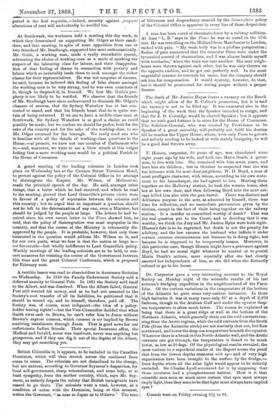Dr. Carpenter gave a very interesting account to the Royal
Society on Monday night of the scientific results of his last autumn's dredging expedition in the neighbourhood of the Faroe Isles. Of the curious variations in the temperature of the bottom of the Atlantic he gave some very curious instances. In these high latitudes it was in many cases only 360 at a depth of 2,400 fathoms, though in the Arabian Gulf and under the equator deep- sea temperature is often much lower. The reason he explained as being that there is a great ridge or wall at the bottom of the Northern Atlantic, which generally shuts out the cold currents run- ning from the Arctic regions, while the cold currents from the South Pole (from the Antarctic circle) are not similarly shut out, but flow northward, and lower the deep-sea temperature beneath the equator. Wherever there is a break in axis N orth-Atlantic wall, and the Arctic currents can get through, the temperature is found to be much lower, as low as 30 degs. Of the physiological results revealed, the most curious to a superficial reader of the Report seems the proof that from the lowest depths creatures with eyes and of very high organization have been brought to the surface by the dredge,— from depths where all the solar light would appear to be entirely excluded. Sir Charles Lyell accounted for it by supposing that these creatures had a phosphorescent habitat. How is it that scientific men seem so much more certain that eyes mast always imply light, than they seem to be that light must always have implied eyes ?


































 Previous page
Previous page